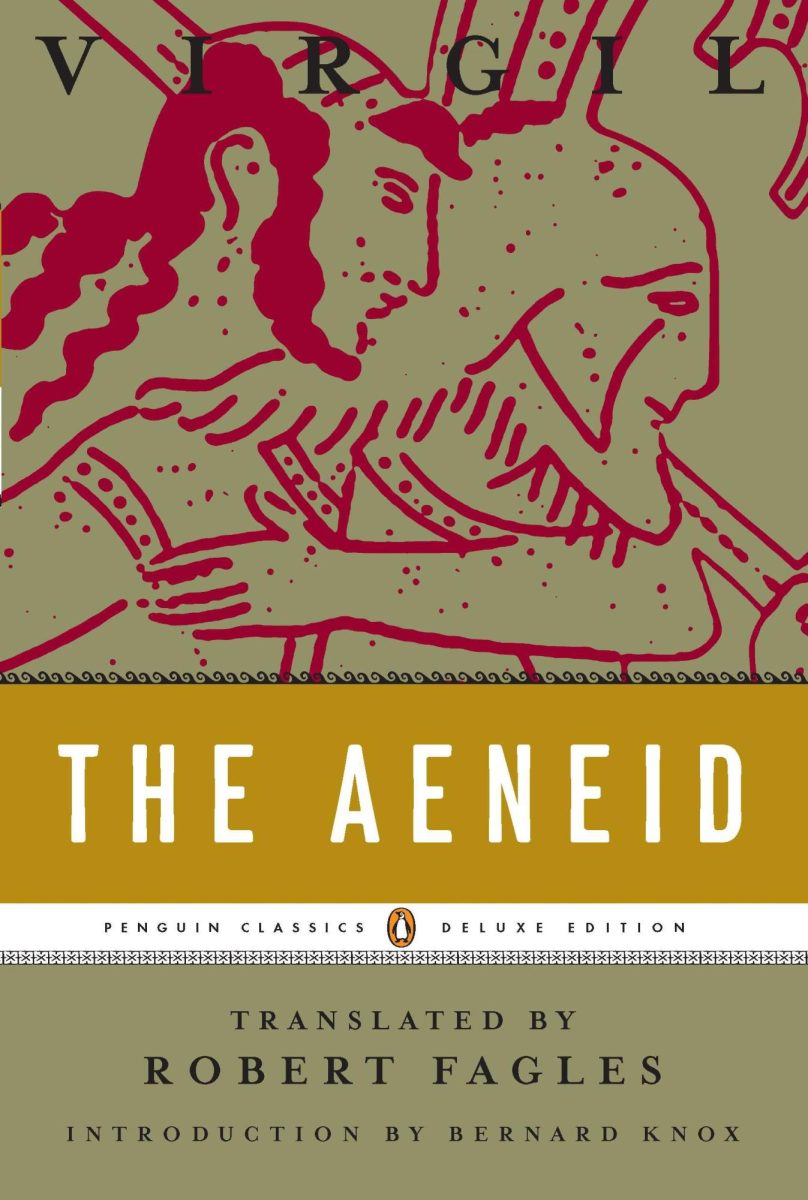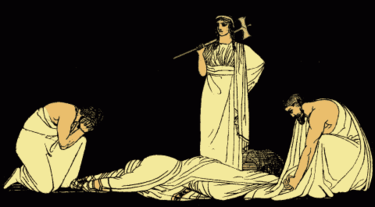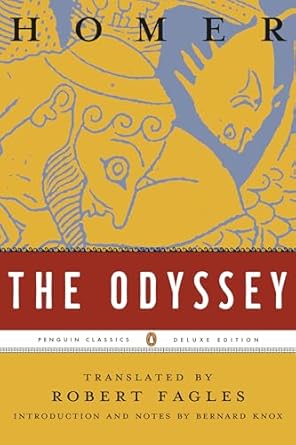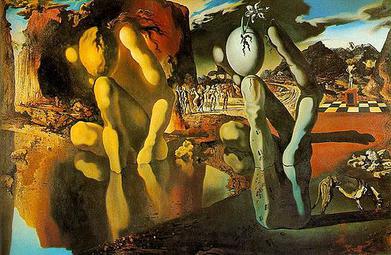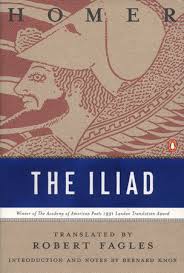Wars and a man I sing—an exile driven on by Fate,
He was the first to flee the coast of Troy,
Destined to reach Lavinian shores and Italian soil,
Yet many blows he took on land and sea from the gods above—
Thanks to cruel Juno’s relentless rage—and many losses
He bore in battle too, before he could found a city,
Bring his gods to Latium, source of the Latin race,
The Alban lords and the high walls of Rome.
So begins The Aeneid, composed of twelve books, commissioned by Roman Emperor Caesar Augustus and written by Publius Vergilius Maro (aka Virgil), between 29 and 19 BC. The Aeneid tells the story of Aeneas, Trojan hero and son of Venus (Aphrodite), who leads a group of Trojan refugees to find a new home in Italy in a land called Latium, leading to the foundations of Rome.
Written during Rome’s transition from Republic to Empire, The Aeneid is often credited with legitimizing Roman identity and providing a source of national pride. Rather than looking only to the mythologies and stories of the Greeks, Virgil gave the Roman public a story to call their own with a truly Roman text.
Now, despite The Aeneid being “Roman,” it has A LOT of influences from Greek texts, most notably and explicitly, The Iliad and The Odyssey. Consider the text as a continuation of the Epic Cycle, a transition from the Greek tellings of the Trojan War to the Roman perspective of the fallout. The first half of The Aeneid (Books 1-6) heavily mirror The Odyssey while the second half (Books 7-12) borrows multiple aspects from The Iliad. Aeneas, like Ulysses (Roman name for Odysseus), goes island-hopping for many years, encountering such entities as Charybdis and Scylla, visits the land of the cyclops, and even takes a trip to the underworld to receive instructions from the dead. He is also personally hated by a goddess (Juno [Greek Hera]), like Odysseus is by Poseidon, albeit Aeneas is hated because he is prophesied to bring about the destruction of Carthage, which is Juno’s favorite city, while Poseidon hates Odysseus for blinding one of his sons, Polyphemus the cyclops. When Aeneas finally arrives at his prophesied destination, his claim to a Latin girl’s hand is challenged, leading to an all-out war over a bride everyone wants to marry: Lavinia, daughter of King Latinus. If you’re thinking the coveted bride plot sounds a lot like Helen in The Iliad, you’d be right. Turnus, Aeneas’ nemesis in the latter half of The Aeneid, and main contender for Lavinia, calls himself the new Greek Achilles. Achilles and Hector, er, I mean, Turnus and Aeneas are now rivals.
Besides all of this, my thoughts on The Aeneid aren’t at all contentious. I don’t regret reading it like other texts I have, though I won’t recommend it to anyone without some prior knowledge of Greek and Roman mythology. It was by all means, not a bad work. History has looked kindly upon Virgil, canonizing him among Rome’s greatest writers alongside Horace and Ovid. His work has proven influential and a great marker of Roman culture. To the modern reader, he serves as a fascinating look into antiquity.
Virgil himself proved influential throughout the ancient and modern world. One of the most notable examples is that of Dante Alighieri’s Divine Comedy, where Virgil serves as Dante’s guide through hell, giving him a tour of the now immortal nine circles which compose it. Dante’s literary masterpiece was written between 1308-1321, serving already as a transition from ancient hexameters (a form of rhyming scheme used in classical texts), to modern thought. Why is Dante such a fanboy for Virgil? That, I don’t know. People often credit Dante for “Inventing fanfiction,” which, while he might have popularized self-inserts directly, Virgil could be argued to have done the same with Homer.
There were many parts of the poem that really stood out to me and that I really enjoyed. One of the biggest ones comes in Aeneas’ retelling of the infamous ‘Sack of Troy,’ where we get in explicit detail the role Sinon, a Greek soldier captivated by the Trojans, played in commencing the siege, the tragedy of Laocoön and his sons, the Trojan Horse, and the ultimate fall of Troy. Another such part was that of the death of Queen Dido, which though kind of gruesome in nature (she lits herself on a pyre on top of all of Aeneas’ things and stabs herself whilst on fire), is written in such a poetic way that leaves the lines imprinted in your mind.
From this chapter also comes one of my favorite aspects of this poem which I really loved, and is unique to it, not occurring in either The Iliad or The Odyssey. That is the use of history. Dido is the legendary, non-historical founder and first queen of the Phoenician city of Carthage, a major city in the ancient Mediterranean world. In the poem, Aneas stays in Carthage for some years and develops a relationship with Dido, until Zeus reminds him of the prophecy he is to fulfill. Aeneas tries to leave secretly but Dido finds out. She becomes furious at him for refusing to stay with her, and so she decides to take her own life. Through her dramatic death, she curses Aeneas and all his people and declares that her people and his people will forever be in conflict with one another. This, if you know your world history, is a reference to the Punic Wars fought between Carthage and Rome. Dido even invokes an ‘avenging spirit,’ in possible reference to the legendary and very real Carthaginian general, Hannibal.
Although these aspects stood out to me as great, some other parts of the poem, especially in the later half, were not much to my liking. The whole fight between the Trojans and Turnus and his allies wasn’t all that memorable. It was too reminiscent of Ulysses fighting off Penelope’s suitors for five chapters in The Odyssey and all of the fights within fights of The Iliad, all of which are my least favorite parts of all three works. The Aeneid also leaves off in an unsatisfying ending, directly after the death of Turnus. This however gets a pass, due to Virgil dying before finishing his masterpiece.
Tradition holds that Virgil traveled to Greece around 19 BC while doing research for his poem. After visiting Athens, he decided to return home to Italy, and after visiting a city near Megara, (No relation to Hercules) he eventually got sick. He died on the ship back home , but before expiring , asked his close friends to burn the manuscript he had written. After news of this got to Caesar Augustus, however, he disregarded Virgil’s wish and ordered the manuscript to be published anyway. That is why 2,000 years later, we can still read The Aeneid .
With all this being said, I enjoyed reading Virgil’s magnum opus and would be interested in reading more Roman texts . I give Aeneas’ journey to Italy 7.5 out of 10 stars and would recommend it to anyone wanting to expand their knowledge of Roman mythology, as well as fans of Homer.
Finally, to get technical, Virgil wrote The Aeneid in Latin. If you can read and understand Latin, I commend you, but if you can’t and want to read Virgil’s work for yourself you will need a translation. To this I recommend Robert Fagles’ adequate translation which I also used for Homer’s Iliad and Odyssey. These also include explanatory notes which I always enjoy. Thanks for reading.


